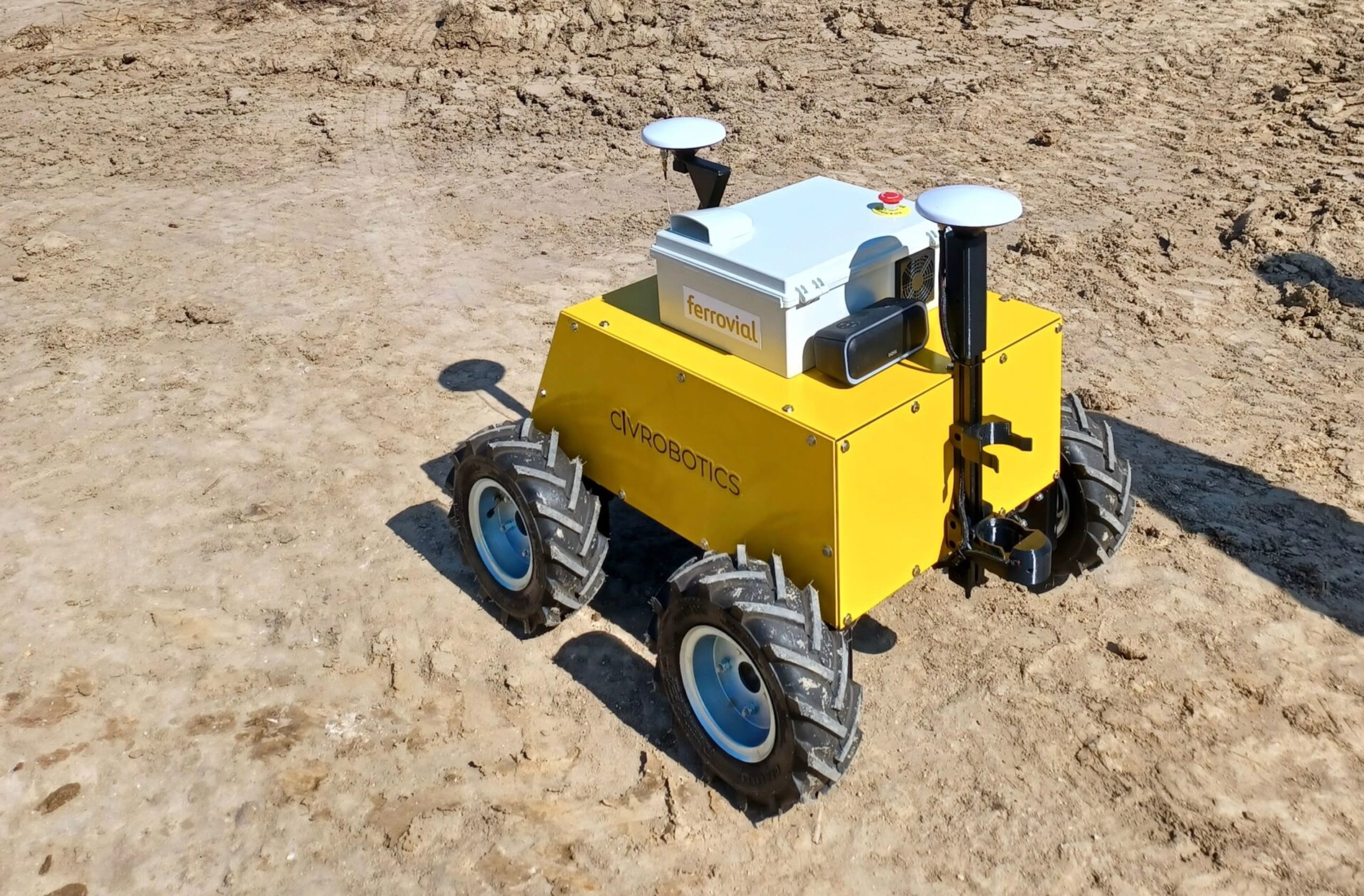
Ferrovial has joined a number of construction firms using “stakeout robots” on its projects, including for outdoor civil works.
The rolling machines draw full-scale plans on the surface or floor of a site, producing lines, marks, and texts defined in a CAD file.
Indoor robots that print lines and marks on clean floor slabs have been used recently by Skanska for a medical building in San Jose, California, and by a Vinci-Sir Robert McAlpine JV at a hospital in Derby, UK.
But far less common is their use on soil outdoors.
A Ferrovial spokesperson told us that outdoor stakeout robots are less precise than indoor ones; they make lines and dots with paint.
“In case of challenging outdoor applications, the robot has to be more robust, and works with inverted conventional spray cans,” the spokesperson said.
“The robots are less accurate in these cases and usually mark lines or dots on the soil, depending on the use case. Some of the robots can even work for topographic surveys in very muddy and uneven terrains.”
The company said its goal was to increase the speed and quality of the stakeout process ten-fold.
The robot must be connected to a total station theodolite (TST) or work directly using GPS.
It is configured by downloading a DXF or CAD file containing lists of layers to be printed.
As it plots, it displays progress on an online platform.
Ferrovial said the robots can also provide reports and more specific measurements, making it a “comprehensive digital ally on site”.
It has tested the robots on sites including the Costa del Sol Hospital in Marbella, the Bensell office building in Manoteras, Madrid, the Montepino warehouse in Illescas, the office block on Mahou Calderón, and a 148-home complex in Badalona.
Further reading:






